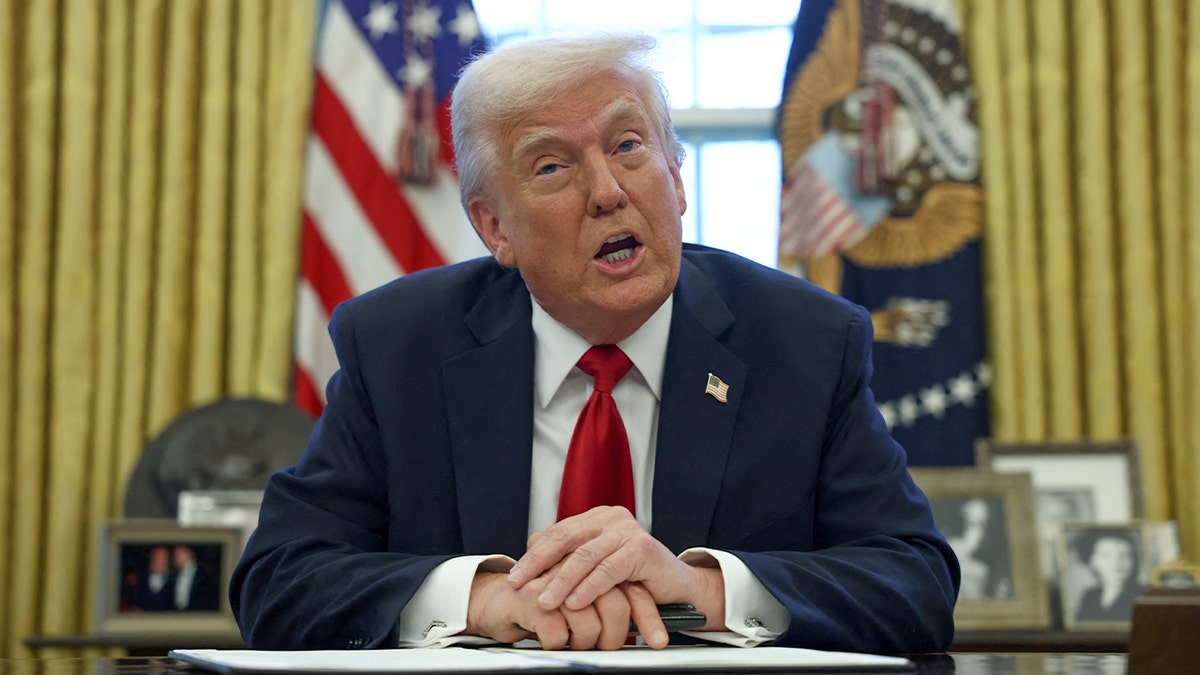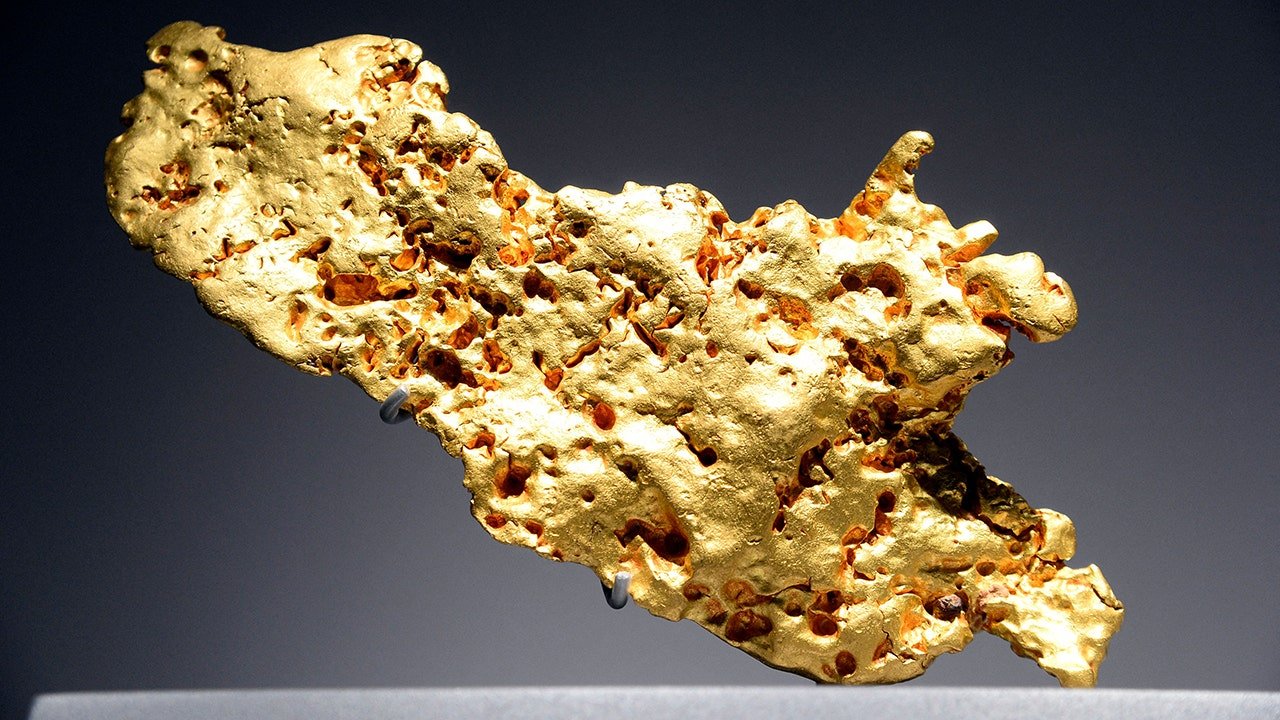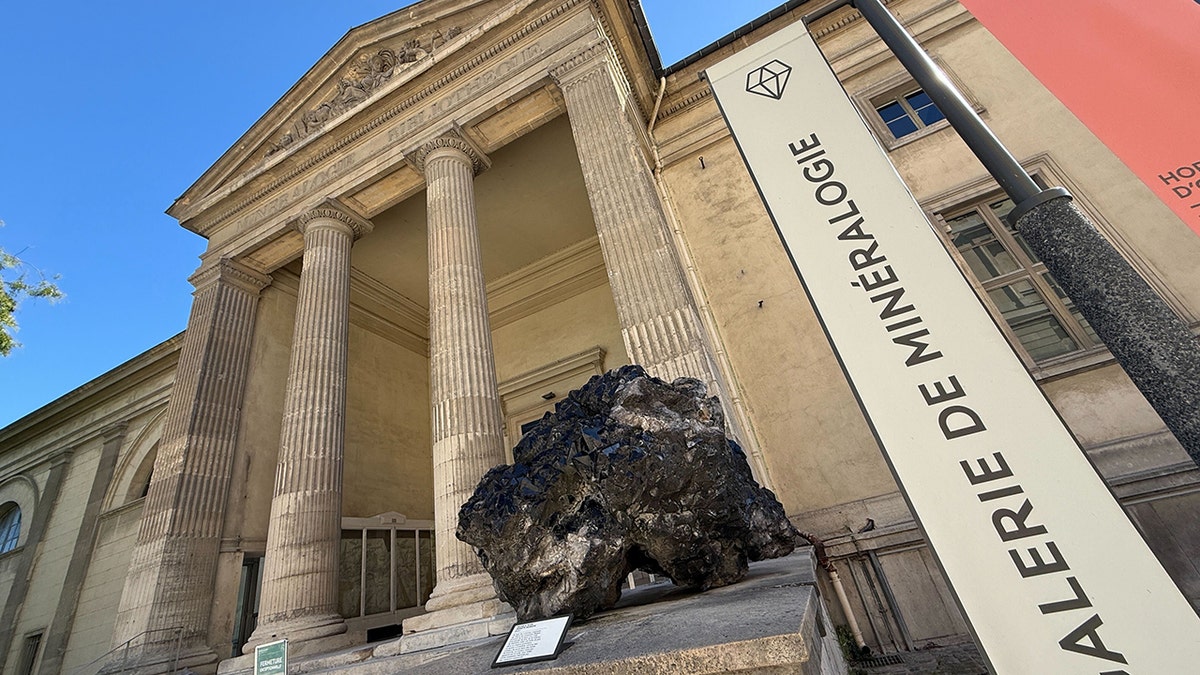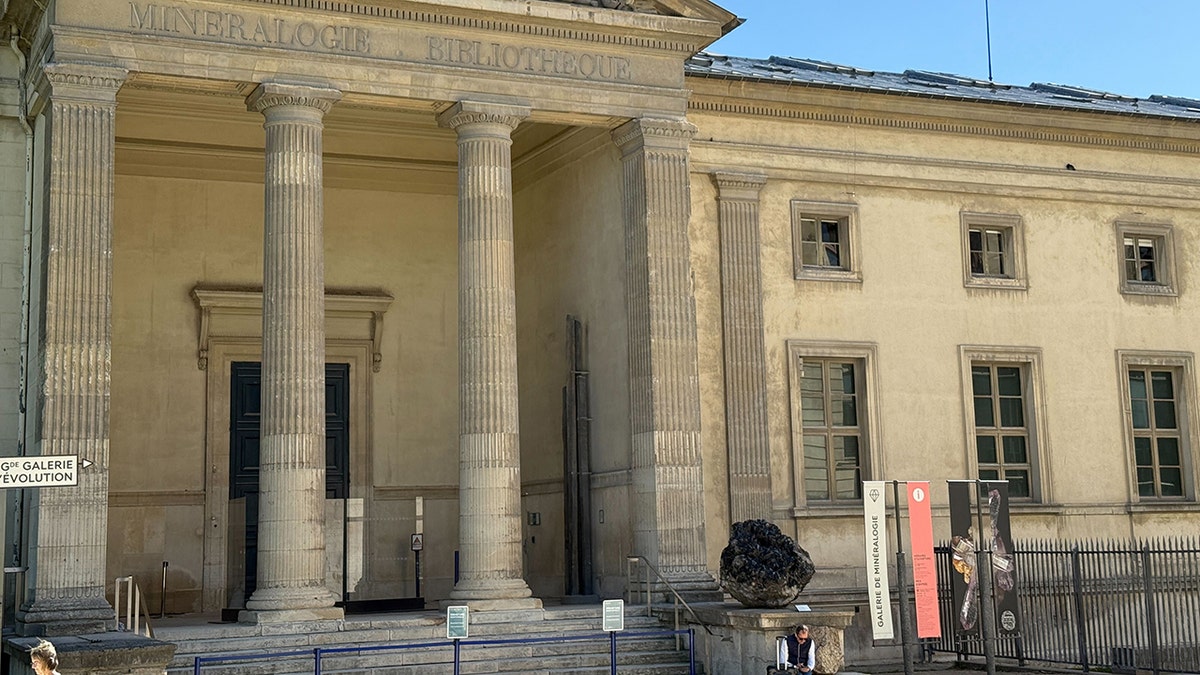INTERNACIONAL
White House: US will lead in AI, but China is catching up

EXCLUSIVE: China’s innovation in artificial intelligence is «accelerating,» according to Michael Kratsios, director of the White House Office of Science and Technology. He told Fox News Digital that the United States’ «promote and protect» strategy will solidify its standing as the world’s dominant power in AI.
Kratsios, who served as chief technology officer during the first Trump administration, sat for an exclusive interview with Fox News Digital on Monday.
FLASHBACK: US TECHNOLOGY CHIEF WARNS CHINA ‘TWISTING’ ARTIFICIAL INTELLIGENCE TO TARGET CRITICS, AS AMERICA JOINS GLOBAL PACT
«The White House in the first Trump administration redefined national tech policy to focus on American leadership in emerging technologies, and those were technologies like artificial intelligence, quantum computing and 5G, [which] were big back then,» Kratsios said. «The president, at that time, signed the executive order prioritizing U.S. leadership in AI, back in 2019 when people weren’t even talking about it.»
Michael Kratsios, Director of the White House Science and Technology Office. ( Michael Brochstein/SOPA Images/LightRocket via Getty Images)
«He recognized that it was critical for the U.S. to lead in AI,» Kratsios said. «We got the ball rolling on what the U.S. national strategy is and how we would win.»
During his first administration, Trump signed the first-ever executive order on AI in 2019. He also took executive action in 2020 to establish the first-ever guidance for federal agency adoption of AI to deliver services to the American people and «foster public trust» in the technology.
But Kratsios said that when former President Joe Biden took office, the attitude of his administration toward AI shifted to «one of fear and one of over-regulation.»
«There was a fixation on what I would call harms, so, spending time and energy thinking about all the things that could go wrong with this technology, versus having a balanced approach, where you try to minimize things that could go poorly, and more importantly, look at ways this technology can transform America for the better,» Kratsios explained, noting that Biden officials were «harms focused,» which he said was «manifested in a lot of the policies that they did, in the way that they were very reticent to applying some of this technology to a lot of the issues that government faced, like how you make agencies more efficient.»
Kratsios reflected on Trump’s AI message during the campaign, saying he «made it very clear that we as a country need to win and be dominant in artificial intelligence.»

The United States’ «promote and protect» strategy will solidify its standing as the world’s dominant power in AI. (Jaap Arriens/NurPhoto via Getty Images)
«And he acted very decisively,» Kratsios said, pointing to Trump’s move on his third day in office to direct him and other officials to develop an AI action plan.
«It was a way to review everything that had been done under the Biden administration and turn the page with an agenda that’s focused on sustaining and ensuring continued U.S. leadership in this particular technology, and that’s what we’ve been working on,» Kratsios said.
‘AI POWERHOUSE’: WHITE HOUSE ENCOURAGES AMERICANS TO PROVIDE IDEAS FOR ARTIFICIAL INTELLIGENCE STRATEGY
Kratsios explained that the U.S. is «the leader» in AI, specifically when it comes to the «three layers of technology,» which he said are chips or high-end semiconductors, the model itself and the application layer.
«If you look at all three of those layers, the U.S. is the leader,» Kratsios said. «We have the best chips. We have the best models. And we have the best applications to date.»
But he warned that the Trump administration is «seeing the velocity of innovation» from China.
«We’re seeing the speed at which the PRC is catching up with us is actually accelerating,» he explained.
Kratsios referenced DeepSeek, which was released by a Chinese firm earlier in 2025 and develops large language models.

DeepSeek was released by a Chinese firm earlier in 2025 and develops large language models. (Reuters/Dado Ruvic/Illustration)
«I think what DeepSeek revealed is that the Chinese continue to make progress and are trying really hard to catch up with us on those three layers,» Kratsios said.
But the key to maintaining U.S. dominance in the space is the Trump administration’s «promote and protect» strategy, Kratsios explained.
Kratsios said the Trump administration will «promote» by continuing to accelerate the development of technology and encouraging more Americans, American companies and countries around the world to use that technology.
«And then on the protect side, what is it that the U.S. has which could be useful to the PRC to accelerate their efforts in AI? We protect that technology from access by the Chinese,» Kratsios said, pointing to high-end semiconductors and chips that the Chinese «shouldn’t have access to, because that would make it easier for them to accelerate their efforts.»
«How do we speed up innovation here at home and slow down our adversaries?» Kratsios said.
OPINION: HOW TEAM TRUMP CAN MAKE AI STAND FOR AMERICAN INNOVATION
The answer, Kratsios said, is AI research and development that continues to drive innovation. He also said the Trump administration needs to continue to remove regulations and barriers to AI innovation, and also prepare and train Americans in the workforce to «better leverage this technology.»
Kratsios said another step is ensuring that foreign allies partner with the U.S. to «make sure that they are also keeping the PRC at bay and that they continue to use the American AI stack.»

During his first administration, Trump signed the first-ever executive order on AI. (Evelyn Hockstein/Reuters)
«So, if you’re any country in the world that wants to use AI, you’d want to use an American stack,» he explained. «So we should make it as easy as possible in order for us to export our technology to like-minded partners.»
As for China, Kratsios said the PRC «is probably one of the most sophisticated surveillance states in the world, and that is underpinned by their own artificial intelligence technology.»
«I think the goal of the United States should be to continue to be the dominant power in AI. And there are certain inputs to the development of AI which we can control, and which we would not want the PRC to have access to,» he said. «And the most important pieces are sort of these very high-end chips that they can use to train models, and also certain equipment that would allow them to build their own very high-end chips.»
He added: «And if we can kind of continue to make it challenging for them to do that. I think it’ll be the benefit of the U.S.»
Looking ahead, Kratsios echoed the president, saying the U.S. is in the «golden age» and that this special moment in time is «underpinned by unbelievable science and technology.»
CLICK HERE TO GET THE FOX NEWS APP
«We want to put an American flag on Mars,» Kratsios said. «We want to fly supersonic again. We want drones to be delivering packages around the world. We want AI to be used by American workers to allow them to do their jobs better, safer and faster.»
He added: «We have an opportunity to all these things, like so much more, in these four years. And this office is going to be the home for driving that innovation across so many technological domains.»
Artificial Intelligence,Science & Technology Culture,Donald Trump,Trump’s First 100 Days
INTERNACIONAL
A pedido de Donald Trump, Gran Bretaña despliega tropas en Israel para supervisar el alto el fuego con Hamas en Gaza

Ya están los militares británicos en Israel
Planificadores militares y especialistas
¿Ya han comenzado el trabajo?
Israel es difícil de controlar
INTERNACIONAL
Paris judge indicts Chinese woman for theft of gold nuggets from France’s Museum of Natural History

NEWYou can now listen to Fox News articles!
A Chinese woman was indicted by a judge in Paris for allegedly stealing nearly $2 million worth of gold nuggets from the city’s National Museum of Natural History, including items dating back to the California gold rush.
The Paris Public Prosecutor’s Office announced Tuesday that the 24-year-old suspect was charged with organized theft and criminal conspiracy following the Sept. 16 heist. She was arrested two weeks later in Barcelona, Spain, as she was preparing to return to China, it added.
Prosecutors said on the morning of Sept. 16, a museum curator was notified by a cleaning staff member of debris inside the facility and the disappearance of gold nuggets usually on display, which included an 11-pound nugget from Australia, items linked to the 19th century California gold rush and a nugget gifted by Tsar Nicholas I of Russia in 1833.
An investigation determined that two doors at the museum were cut open with a circular saw. In the mineralogy gallery, the display case containing the nuggets was broken into with a blowtorch, authorities said.
LOUVRE HEIST ADDS TO HISTORY OF HIGH-PROFILE MUSEUM BREACHES, LEAVES OTHER GALLERIES ON EDGE
A mineral of gold from Australia is displayed during the exhibition «Earth’s treasures» on Dec. 18, 2014, in the National Museum of Natural History in Paris, France. (Bertrand Guay/AFP via Getty Images)
At the site, investigators found a screwdriver, saws, the blowtorch and three gas canisters used to power the blowtorch, according to the prosecutor’s office.
It said surveillance footage revealed that a single person entered the museum by force around 1 a.m. on the morning of the heist.
The Paris Public Prosecutor’s Office estimated that the financial loss of the gold nuggets is around $1.74 million, while an additional $58,000 worth of damage was caused by the break-in. It also said the historical and scientific value of the gold pieces was priceless.
NEW VIDEO PURPORTEDLY SHOWS LOUVRE THIEVES IN ACTION DURING BRAZEN DAYTIME HEIST

The Galerie de Mineralogie of the National Museum of Natural History is seen in Paris, France. (Rachel Sommer/picture alliance via Getty Images)
At the time of her arrest in Barcelona, the suspect attempted to dispose of around two pounds of melted gold pieces, prosecutors added.
They said the investigation remains ongoing, as authorities are trying to figure out what happened to the stolen items and if there are any accomplices.
In France, the organized theft charge is punishable by up to 15 years in prison.

The National Museum of Natural History in Paris was broken into on Sept. 16, 2025, prosecutors said. (Rachel Sommer/picture alliance via Getty Images)
CLICK HERE TO GET THE FOX NEWS APP
The suspect remains in custody while awaiting court proceedings.
france,crime,europe,spain,china,history,world
INTERNACIONAL
Racist text scandal sinks Trump nominee for government watchdog post

NEWYou can now listen to Fox News articles!
Paul Ingrassia withdrew his nomination to lead a government watchdog agency on Tuesday after his inflammatory rhetoric came to a head this week in a report about race-fueled text messages he purportedly sent.
Ingrassia’s decision to remove himself from consideration to head the Office of Special Counsel came two days before the Senate Committee on Homeland Security & Governmental Affairs was set to consider his nomination.
«I will be withdrawing myself from Thursday’s HSGAC hearing to lead the Office of Special Counsel because unfortunately I do not have enough Republican votes at this time,» Ingrassia wrote on social media.
Senate Majority Leader John Thune, R-S.D., quashed all hope of Ingrassia’s confirmation on Monday, saying, «He’s not going to pass.» When asked on Tuesday if it would be a mistake for Ingrassia to appear for his hearing, Thune laughed and said, «Yeah.»
KEY TRUMP NOMINEES STALLED BY SENATE DEMS PUTS PRESSURE ON GOP LEADERS
Paul Ingrassia, White House Liaison to the Justice Department, left, announces the release of brothers Andrew and Matthew Valentin outside the D.C. Central Detention Facility on Jan. 20, 2025, in Washington, D.C. (Pete Kiehart/The Washington Post)
Ingrassia, 30, said in a group chat, according to Politico, that he sometimes had a «Nazi streak» in him, and he used the term «moulignon,» an Italian slur for Black people, to call for doing away with Martin Luther King Jr. Day and Black History Month.
The leaked chat was only the latest controversy as Ingrassia has floated around the administration serving in two different roles.
In July, Ingrassia faced a formal complaint from a lower-ranking female colleague who alleged, according to Politico, that when they arrived at a hotel for a work trip in Orlando, she found she did not have a room and was informed by Ingrassia that she would be sharing one with him. The woman, who did end up sharing a room with him, later retracted the complaint and Ingrassia also disputed it.
Ingrassia has publicly defended social media influencer and self-described «misogynist» Andrew Tate, and previously worked at a law firm that said he was on Tate’s legal team before his July 2024 admission to the New York bar. Tate and his brother face U.K. charges of rape, actual bodily harm, human trafficking and controlling prostitution for gain, filed by the Crown Prosecution Service in May 2025. They deny the allegations.
Ingrassia was first hired as a White House liaison at the Department of Justice, where he was briefly put in charge of hiring Trump loyalists at the department. But he abruptly left and took a job at the Department of Homeland Security instead.
President Donald Trump nominated Ingrassia in May to lead the Office of Special Counsel, an independent agency (unaffiliated with the DOJ) that vets workplace complaints from federal employees.
TRUMP EXPLOITS LOOPHOLES TO KEEP ALINA HABBA IN US ATTORNEY ROLE, TRIGGERING COURT CLASH

President Donald Trump speaks in the Oval Office of the White House, Friday, Aug. 22, 2025, in Washington. (Jacquelyn Martin/AP Photo)
«Paul is a highly respected attorney, writer, and Constitutional Scholar, who has done a tremendous job serving as my White House Liaison for Homeland Security,» Trump wrote on Truth Social at the time.
Ingrassia rejected Politico’s characterization of the text messages, saying through his lawyer that even if they were real, «they clearly read as self-deprecating and satirical humor making fun of the fact that liberals outlandishly and routinely call MAGA supporters ‘Nazis.’»
Ingrassia has been scrutinized time and again for controversial writings, and pressure had been building on Trump to yank his nomination.
In a since deleted X post days after Hamas’ terrorist attack on Israel, Ingrassia called the Palestine-Israel conflict a «psyop.»

Controversial influencer Andrew Tate (C) arrives at the Municipal Court of Bucharest, Romania, on June 21, 2023. (Daniel MihailescuI/AFP via Getty Images)
CLICK HERE TO GET THE FOX NEWS APP
A coalition of Jewish organizations was among those who called for Ingrassia’s nomination to be withdrawn.
«Mr. Ingrassia’s public statements and associations with people who espouse antisemitic, racist, and misogynistic views, raise serious questions about his ability to carry out these responsibilities with the integrity, impartiality, and commitment required of the office,» the coalition wrote.
A White House official confirmed to Fox News Digital that Ingrassia was no longer the nominee.
Alex Miller contributed to this report.
donald trump,congress,white house,republicans elections,white house,donald trump,homeland security

 CHIMENTOS3 días ago
CHIMENTOS3 días agoLa fuerte actitud de Manu Urcera con Indiana Cubero que reveló la verdad de la interna familiar: “El saludo del piloto a la hija de Nicole Neumann por su cumpleaños”

 CHIMENTOS2 días ago
CHIMENTOS2 días agoLa cruda confesión del Turco Naim a 1 año de la separación de Emilia Attias: «Me di cuenta que hay que aprender a estar solo»

 CHIMENTOS3 días ago
CHIMENTOS3 días agoLa íntima confesión de Benjamín Vicuña a su novia Anita Espasandín en el medio de sus vacaciones que sorprendió a todos



























